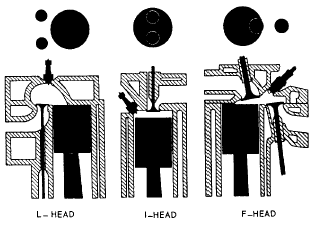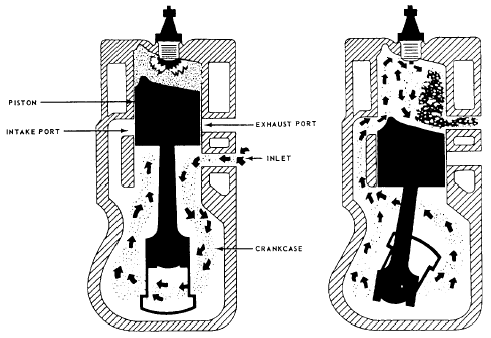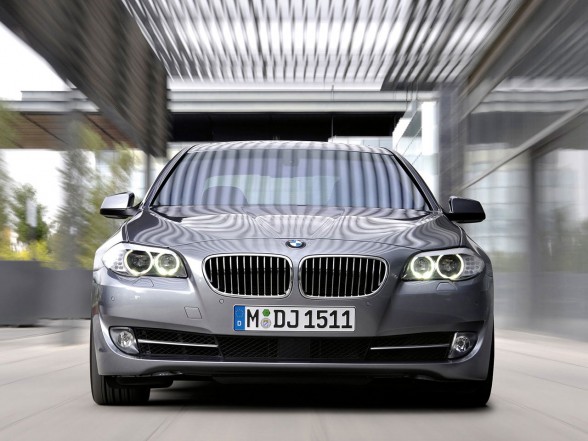Rotary Engine
SUMMARY
The first thing you notice about rotary engines are their incredibly compact dimensions. A basic 13B (1.3 liter) engine is approximately the size of a beer keg and can be lifted by one fit person. At the same time, it has a volumetric capacity twice that of a conventional piston engine of identical rated displacement.
How is this possible?
The secret is in the packaging. Each rotor section (rotor and housing) form three working chambers, which work simultaneously to move its entire rated displacement on each turn of the eccentric shaft. How it does this will be the subject of later RE 101 articles; for now, let's look at the components and nomenclature.
COMPONENTS AND NOMENCLATURE
Rotary engines are basically a sandwich of iron and aluminum housings that contain rotors and an eccentric shaft. Typical rotary engines have two rotor sections, with rotor housings providing lateral containment of the rotors within. Additionally, there are three side housings (front, intermediate, and rear) to provide fore and aft containment. Rotor housings are typically aluminum, while side housings and rotors are cast iron with machined surfaces. The eccentric shaft connects the two rotors, 180 degrees out of phase, slightly offset from the center of rotation, and transmits power to the flywheel, similar to the crank in a piston engine. Intake ports are typically run through the side housings, in what is called a side port intake configuration, while the exhaust ports are traditionally run directly through the rotor housings, which is referred to as a peripheral port exhaust configuration. With respect to ports, one important difference between rotaries and their piston counterparts is the lack of any complicated valvetrain to control the intake and exhausts ports. Instead, the ports are opened and closed by the movement of the working chambers.



Rotors
Rotor Housings
eritrochoid, and the inner surface is coated to withstand wear from the rotor apex seals. The most apparent feature of a rotor housing is the peripheral exhaust port, which carries away spent combustion gasses. Also worth noting are the two spark plug holes. The top one is called the Trailing spark plug and the lower one is the Leading spark plug. While the leading plug does most of the "work", the trailing spark plug helps "clean-up" the combustion in the long chamber. You can read more about this in the Ignition section. All the round holes lengthwise through the housing are for Tension Bolts that hold the engine together. The larger, non-round holes through the housing are the water jacket, where coolant flows. Tubular Dowels also run through the housings lengthwise and serve as internal oil passages. The Oil Injection Bung on top of the housing provides a means for the oil injectors to lubricate the apex seals. There is a small hole in the trochoid surface through with the oil flows. This kind of lubrication is necessary because, unlike a piston in a cylinder, both sides of the seal are exposed to combustion so oil cannot be sprayed on the "back-side"

Side Housings
Side Housings perform many important functions in the rotary engine, including fore and aft containment of the rotors, provision of hard and soft seal mating surfaces, continuation of the water jacket, passages for cooling and lubricating oil, and a means to bring in the air/fuel via the side intake ports and runners. The intermediate housing (pictured above) has two surfaces, with ports on either side for both rotors.
Ports in the intermediate side housing are called the Primary ports, and typically have provisions for fuel injectors through the top of the housing into the runner. Front and rear side housings also have intake ports, which are called Secondary ports. 1984, and later, 13B non-turbo engines also have a third type of port in the front and rear side housings called Auxiliary ports, which are opened by actuators for high-RPM operation to maximize top end power and closed for low-RPM operation to improve low-end torque. All turbo engines, and non-turbo engines before 1984, have only Primary and Secondary ports (two of each), so they are known as "4-port" engines. Those with Primary, Secondary and Auxilary ports (again, two of each) are called "6-port" engines. In casual use, it is not uncommon to hear the Auxiliary ports, themselves, referred to as the "6-ports", or sometimes the "5th and 6th ports".
Port size, as you can see in the above image, is limited by the tracks of the rotor oil seals and corner seals. The primary port pictured above has been enlarged from the stock size. This particular type of port enlargement is known as a "street" port, as it is both mild and keeps "between the lines". More extreme porting typically uses more creative approaches to increasing the port volume. Please refer to the "Ports" section for further information.
1985 and earlier engines had water o-ring grooves in the rotor housing and a corresponding flat mating surface on the side housings (as pictured above). Later ('86+) engines moved the groove to the side housing and the flat mating surface to the rotor housing. In practice, the only real concern is that you match rotor and side housings as to have only one side with a grove and one with the flat mating surface.

Stationary Gears are mated to the front and rear side housings and perform three major functions. First, the teeth intermesh with those of the rotor Internal Gear, to keep everything in sync. Second, the gears house the Main Bearings (not pictured here) which locate the eccentric shaft by its journals. And finally, they provide a means to deliver lubrication and cooling oil to the eccentric shaft and all the bearings/journals. Prior to 1993, the main bearings had one "window" through which the oil passed. Current versions have "Three-window" main bearings (and a special groove inside the stationary gear) for improved lubrication. Tooth load on the stationary gear is one of the limiting factors in allowable maximum RPM of a rotary engine. Stock gears begin to deform over 8,000 RPM, but hardened gears are available for higher RPM applications




















